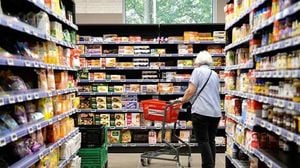The Swiss honey market is facing serious authenticity issues, as highlighted by recent investigations indicating widespread fraud among imported honey. A documentary report by Kassensturz reveals shocking findings: out of 20 honey samples tested, 17 were deemed "not authentic". This problem arises primarily from the high volume of low-cost imported honey, mostly sourced from Germany, Argentina, and Mexico, which fails to meet quality standards.
Switzerland is known for its remarkable consumption rates of honey, averaging 1.3 kilograms per person annually, yet domestic production covers only about one-third of the country's demand. This heavy reliance on imports has sparked international concerns and investigations, especially considering the rising cases of honey adulteration with cheaper substances like sugar syrup.
The European Anti-Fraud Office (OLAF) has taken significant action to combat honey fraud, engaging in operations such as "from the hives," which recently revealed troubling statistics: 46% of the tested suspicious honey samples were found to be adulterated. This expansive operation led to sanctions against 133 honey importers and exporters, underlining the scale and complexity of the problem.
Experts indicate the issue goes beyond mere fraud; it involves sophisticated methods of adulteration. An insider noted, "The adulterators know the tests and are working to trick them." To combat this, scientists worldwide have been collaborating for several years to develop advanced DNA-testing techniques to detect honey authenticity. These techniques analyze millions of DNA sequences from various sources including plants, bacteria, fungi, and even humans, providing comprehensive insight beyond standard testing methods.
One significant breakthrough has come from the Estonian laboratory Celvia, which has recently launched new DNA testing services for honey authenticity. Their laboratory has already flagged honey imported from Germany and Austria as "not authentic," and now Swiss-sold honey is also under scrutiny.
Professor Michael Traugott from the University of Innsbruck emphasizes the importance of these results. Having spent over two decades developing and applying DNA trace analysis, he remarked, "The results from the Celvia laboratory should be taken seriously." His own research on honey from Germany and Austria echoed similar findings. These advancements aim to equip consumers and regulatory bodies to remain one step ahead of counterfeiters.
The pressure is mounting on organizations like Narimpex, one of Switzerland's largest honey importers, who have come under fire for their practices. Retailers and importers have criticized the new test methods, indicating potential disruptions to their businesses. Amid these tensions, the question of consumer trust looms large—how can the public be assured of the authenticity of the honey they purchase?
With honey's reputation on the line, these investigative efforts shine a light on the need for more stringent testing and transparency within the honey supply chain. Consumers deserve to know the origins and quality of the food they consume. The spotlight on honey authenticity poses broader questions about food integrity, emphasizing the importance of ethical sourcing.
While the investigations continue to expose troubling trends, they also herald advancements in food safety practices, underscoring the collaboration between scientists, regulatory bodies, and the public to create lasting solutions. The fight against honey fraud reflects the broader battle against food counterfeiters globally, striving to preserve quality and trust within the markets.
Moving forward, it's evident more stringent regulations and testing protocols are necessary to combat this widespread issue. With increased awareness and innovation, it is hoped Switzerland can regain its commitment to high-quality honey, ensuring consumers are no longer left guessing what is really inside the jar.



